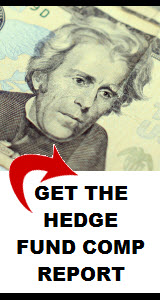While positive returns drove overall assets under management higher during the final three months of 2012, the hedge fund industry saw increasing pressure from investor outflows. Hedgeweek reported that total assets climbed an estimated 0.5 percent in December to $2.6 trillion, closing the year at the 2012 peak. Unfortunately for the industry, total hedge fund investment still remains below the all time highs reached in 2008.
Despite the growth in total assets driven by solid investment returns for the quarter, investor flows are certainly posing a concern to the industry as a whole. An estimated $9.5 billion was withdrawn from the asset class in December alone, which made up most of the $10.3 billion decline over the quarter. For the entire year, the story is a little more optimistic, with 2012 net investment of $29.2 billion, up from the $26.5 billion allocated to the asset class in 2011.
Slow Growth Plagues the Industry
Unfortunately for hedge fund managers, the industry has been plagued by slow growth since the financial crisis in 2008. Investor skepticism, increased regulatory burden, and tax implications have all been drivers of the decline in confidence across the financial industry as a whole, and the hedge fund sector has not been spared. Industry growth has slowed to around 1 percent per year, well off even the post-financial crisis levels of 3.7 percent in 2010.
In terms of specific strategies, fixed income focused funds outperformed when it came to growth in 2012. According to an Alix Capital analysis of the Uctis Alternatives Index, 72 percent of total hedge fund inflows during the last quarter were targeted at fixed income funds. Further, much of this allocation was between the top five performing funds, indicating that high performance is still the most proven way of attracting client funds even during trying economic times.
Investors Continue to Worry About Fees
One further drag on the industry has been the perception that hedge funds have higher fee structures. Management fees have become particularly important due to historically global low yields, and many investors are becoming disenchanted with the majority of their returns being allocated to their fund manager. Most recently legendary investor George Soros chimed in on the issue, indicating he believes that hedge funds as a whole cannot outperform the market due to their high fee structures.
As a result, it’s been difficult for hedge funds to attract new money, leading to the previously discussed growth issues. Revised fee structures and lower cost operating models will need to be a core component of funds that wish to grow their assets under management at an above average pace in coming years. The implementation of lower cost business models will certainly mean continuing pressure on the hedge fund job market.






Comments on this entry are closed.